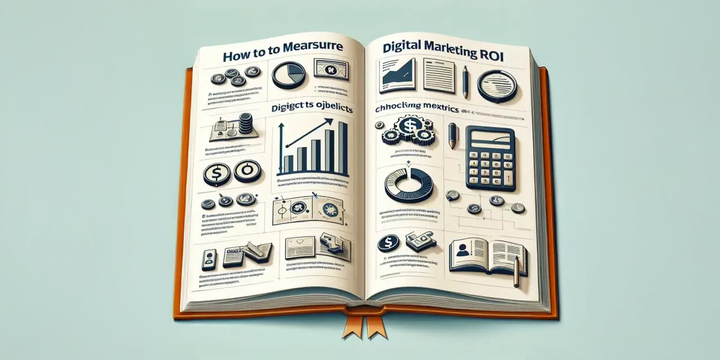How to Measure Your Digital Marketing ROI: A Complete Guide
In today’s hyper-competitive marketplace, it’s more important than ever to measure the return on investment (ROI) of your digital marketing efforts. Success is no longer just about impressions and clicks. Instead, businesses must understand how marketing activities convert into real financial gains. In this complete guide, we’ll explore practical methods to measure digital marketing ROI, enabling you to make smarter decisions and optimise your strategies over time.
What is ROI in Digital Marketing?
ROI in the context of digital marketing refers to the financial gain achieved from marketing activities relative to the cost of executing them. It offers clear insights into campaign effectiveness and helps businesses allocate resources more efficiently.
The basic formula is straightforward:
ROI (%) = (Net Profit / Cost of Investment) x 100
To calculate net profit, simply subtract your total costs from the revenue generated by your marketing efforts.
Why Measuring ROI is Important
- Performance Evaluation: Understanding your ROI helps you assess which campaigns or channels are performing well and which are not contributing to your bottom line.
- Budget Allocation: Measuring ROI allows businesses to fund their most effective marketing channels, ensuring optimal allocation of resources.
- Strategic Planning: Data on ROI can inform future marketing strategies and help businesses set realistic goals based on past performance.
- Accountability: Demonstrating tangible results helps marketers justify their expenses to stakeholders and convince them of the value of digital marketing.
Key Metrics to Consider for Digital Marketing ROI
When measuring ROI, it’s essential to look beyond just revenue. Here are some key metrics that can provide a comprehensive view of your digital marketing performance:
1. Customer Acquisition Cost (CAC)
CAC is the total cost associated with acquiring a new customer, including marketing expenses and sales efforts. The formula is:
CAC = Total Marketing Expenses / Number of New Customers
High CAC can indicate inefficiencies in your marketing strategies or target audience misalignment.
2. Customer Lifetime Value (CLV)
CLV estimates how much profit a customer will generate during their lifetime. Knowing this value helps you determine how much to invest in acquiring new customers. The formula is:
CLV = Average Purchase Value x Average Purchase Frequency x Average Customer Lifespan
When your CLV exceeds your CAC, you’re on the right track for profitability.
3. Conversion Rate
The conversion rate is the percentage of users who take a desired action (like making a purchase or signing up for a newsletter). To find the conversion rate, use:
Conversion Rate = (Total Conversions / Total Visitors) x 100
Monitoring conversion rates can give you insights into your campaign’s effectiveness.
4. Return on Ad Spend (ROAS)
This metric focuses specifically on the returns generated from paid advertising efforts. It’s calculated as:
ROAS = Revenue Generated from Ads / Cost of Ads
Businesses use ROAS to understand the effectiveness of their ad campaigns.
How to Calculate Digital Marketing ROI Step-by-Step
- Determine Your Revenue: Start by analyzing the total sales generated via digital marketing efforts. Use tracking tools like Google Analytics to attribute sales accurately.
- Calculate Total Costs: Include all expenses related to your digital marketing initiatives—ad costs, software subscriptions, salaries, and agency fees.
- Use the ROI Formula: Plug your figures into the ROI formula to calculate the percentage return on your investment.
- Analyze the Results: Identify which campaigns or channels yield high ROI and which ones need improvement or discontinuation.
- Adjust Strategies: Based on insights gathered, tweak your marketing strategies, focus on high-performing channels, and experiment with new approaches.
Tools to Help Measure Digital Marketing ROI
A variety of tools can help facilitate this process, including:
- Google Analytics: Offers insights into website traffic, conversion tracking, and revenue attribution.
- HubSpot: A comprehensive marketing platform that provides detailed analytics and reporting features.
- Hootsuite: Useful for measuring social media ROI by tracking engagement metrics and conversions.
- AdEspresso: Allows you to manage and analyze Facebook and Instagram Ads effectively.
Conclusion
Measuring ROI in digital marketing is crucial for understanding your campaigns’ effectiveness and optimizing them for better performance. By utilizing various metrics and tools, you can gain invaluable insights into your marketing efforts and ensure that your budget is allocated to the strategies that yield the highest returns. Embrace a data-driven approach to marketing, and watch your investments pay off as you continually fine-tune your strategies for optimal results.
—
Power your business with Solutions from DigitalSpace
At DigitalSpace, we have a wide range of easy-to-use services designed to help businesses get online and get found.
Our Services Include:
– Directory Listing Services: Get found where potential customers are looking. Boost your business’s online exposure by getting listed in top online directories such as Google, Facebook, and more.
– Online Reputation Management: Build up your online reputation by using our comprehensive tools to capture online reviews, respond to them quickly, build up positive reviews, and promote them on your website.
Get started today!
Our Digital Experts at Digital Space are here to assist you.
Contact Us.
Email: support@digitalspace.net
Call: 1-888-740-0502
Website: https://www.digitalspace.net
—
digitalspace.net
Get your business up & running online | DigitalSpace
DigitalSpace offers a wide selection of products to help you get online, get found and grow your business. Get started today!


